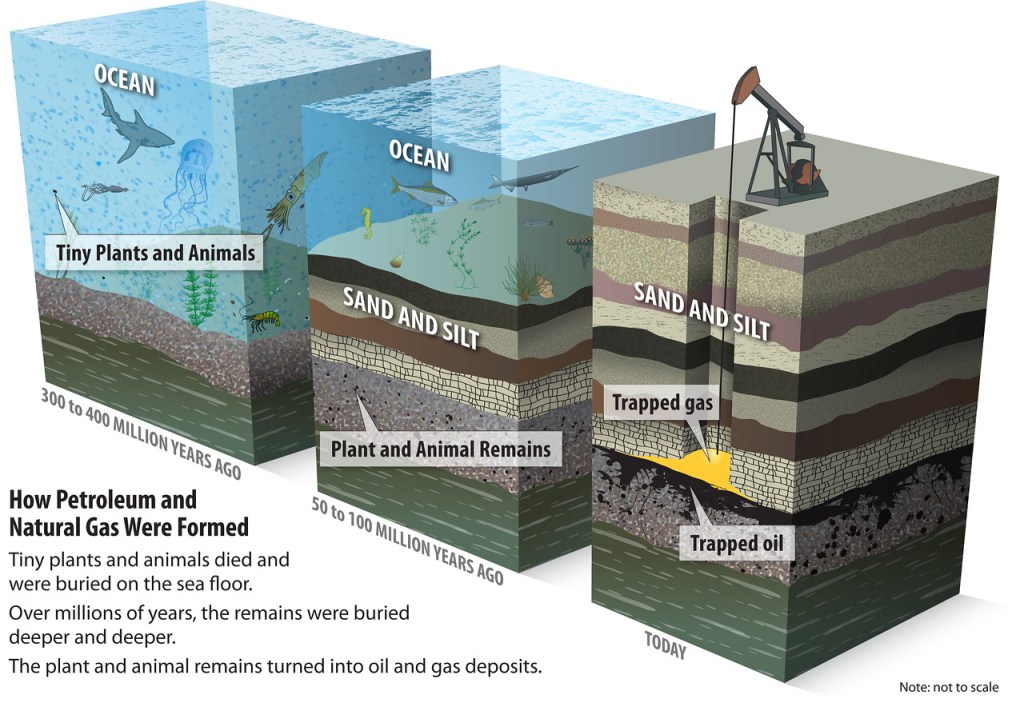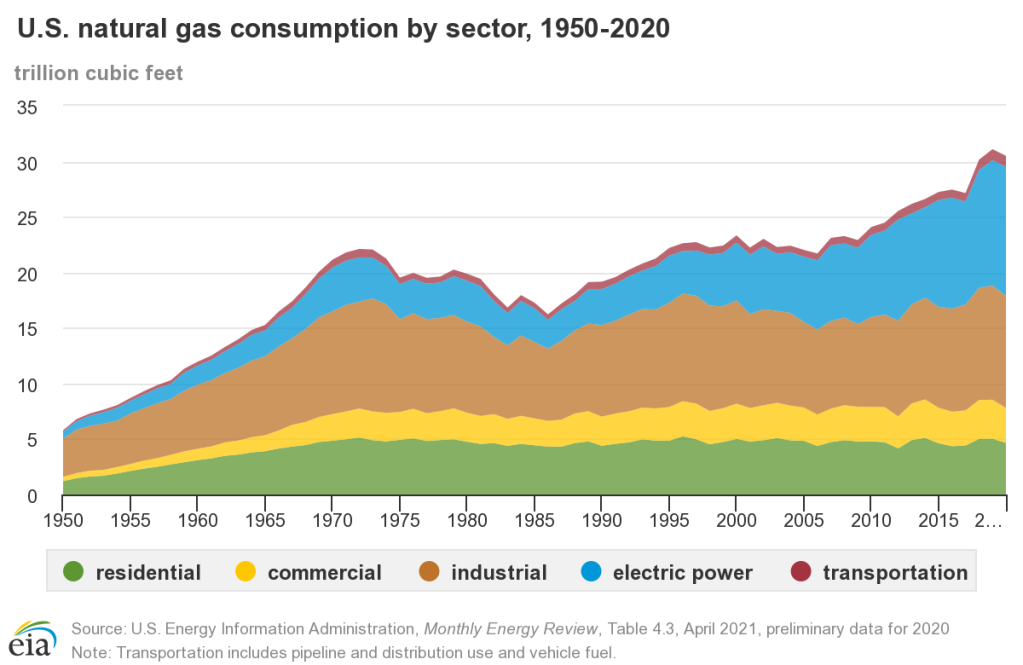
Natural gas is natural because it started from organic matter (plants and animals) buried over time below the earth’s surface millions of years ago. Today natural gas is one of the most prominent energy sources used to generate electricity, warm homes and cook meals.
Natural gas use is increasing
Natural gas is one of the most important tools available today in reducing greenhouse gas emissions because it is a clean-burning and extremely efficient source of energy. It is also abundant and affordable.

People are increasingly using natural gas. In 2020, the U.S. consumed about 30.5 trillion cubic of natural gas, which is about six times more than what was used in 1950, according to the U.S. Energy Information Administration. The majority of U.S. gas used today is for heating and generating electricity.
Environmental benefits of natural gas
Natural gas has been – and continues to be – the most significant contributor to reducing carbon emissions in the U.S., driven in large part by a conversion from coal to natural gas-powered electricity generation.
Globally, coal continues to supply over one-third of electricity generation and is widely used in the iron and steel industrial sector. One proven way to reduce emissions and still meet consumer demand is by switching to natural gas-sourced electricity.
Natural gas is a clean and efficient fuel source for generating large volumes of electricity for power grids. This makes natural gas a great partner with renewables because a reliable power grid (thanks to natural gas) strengthens the viability of intermittent renewables like wind and solar.
Getting natural gas to consumers
Natural gas is moved from production areas to consumers through a highly integrated network of pipelines and storage facilities. First, natural gas is “gathered” from production areas using what are known as gathering pipelines. The gas is then processed in a series of facilities to get it ready to be used.
Next, the natural gas is transported through a large pipeline, known as a transmission pipeline. Transmission pipelines often cross through multiple states, moving the natural gas long distances to get it closer to the end users. The final stage is distribution, in which a local natural gas company typically delivers the gas in a network of smaller pipelines to businesses and neighborhoods.
What’s that smell?
Natural gas is colorless and odorless, making it difficult to detect without proper equipment. As a safety measure, natural gas companies add an odorant to the gas so that people can smell the gas if it is leaking. The odorant is called mercaptan, which is a harmless chemical that gives the natural gas a distinct and unpleasant odor that smells like rotten eggs. Sources: https://www.eia.gov/energyexplained/natural-gas/
Image sources:
“How petroleum and natural gas were formed”, National Energy Education Development Project
“US natural gas consumption by sector, 1950 – 2020”, U.S. Energy Information Administration
Energy & Infrastructure
Midstream 101 Series
Learn how things work with Midstream 101. Midstream 101 is an educational look at Williams operations. You’ll …

